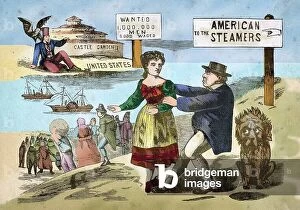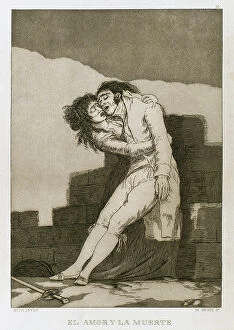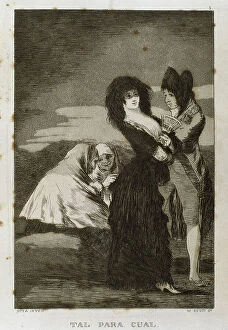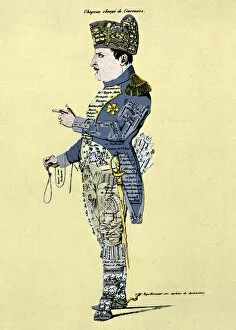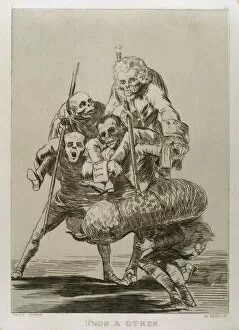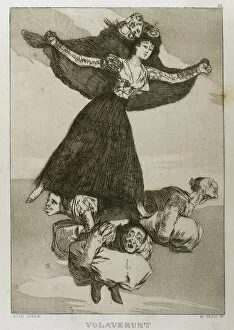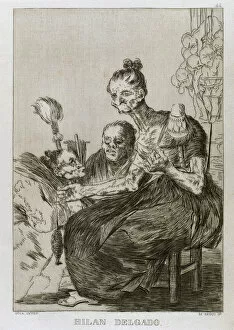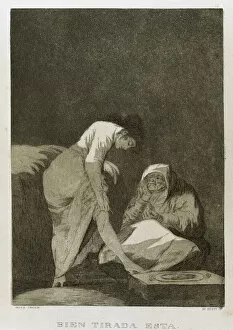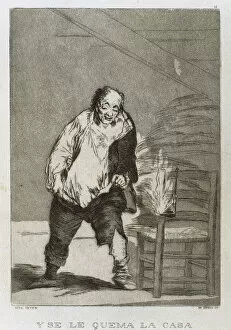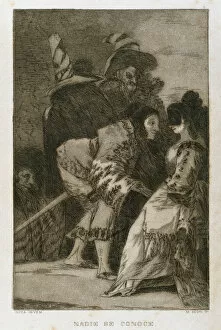Satira Collection
"Satira
For sale as Licensed Images
Choose your image, Select your licence and Download the media
"Satira: Unveiling the Dark Humor of Francisco Goya's Caprices" Step into the twisted world of Francisco Goya (1746-1828) as he explores the depths of human nature through his iconic series, "Caprices. " In Plaque 10, titled "Love and d, " Goya delves into the complexities of love, exposing its often irrational and destructive nature. Plaque 5, "Two of a kin, " showcases Goya's ability to capture the essence of relationships. With masterful strokes, he portrays the intricate dynamics between individuals who are bound by blood or friendship. In Plaque 77, aptly named "What one do, " Goya takes aim at societal hypocrisy. Through biting satire, he exposes how people often say one thing but do another - a timeless critique that still resonates today. Glimpsing into Plaque 61, we witness Goya's sharp commentary on power dynamics. His portrayal of those in authority highlights their insatiable hunger for control and manipulation. Moving on to Plaque 44, "They spin f, " we encounter an allegory for deceit and deception. Here, Goya warns us about being lured in by false promises and empty words. Napoleon Bonaparte makes an appearance in this series as well. As seen in Plaque 58 titled "Swallow it, " Goya satirizes Napoleon's thirst for conquest while highlighting the devastating consequences it brings upon nations. Plaques like number 21 reveal how they play with our perception. Through clever visual tricks and illusions, Goya challenges our understanding of reality itself. And then there is Plaque 20 - "There they" - where chaos reigns supreme. This chaotic scene serves as a reminder that life can be unpredictable and uncontrollable at times. "Don't scream. " warns Plaque 74 as it captures moments filled with fear and terror.

